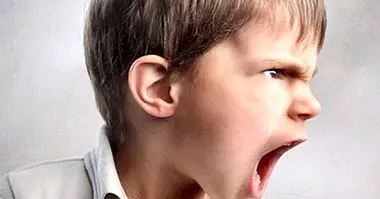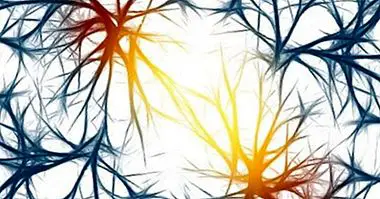Fear of disorder (Ataxophobia): causes, symptoms and treatment
The world of mental disorders is complex, and there are many types. Some of the most frequent are anxiety disorders, which include different classes. Among these types of disorders, phobias stand out , which are irrational and persistent fears that can seriously affect the life of the person who suffers them.
Today we will talk about extreme fear of disorder, known as ataxophobia , and we will explain its causes, its symptoms and its treatment.
- Related article: "The 15 purest phobias that exist"
Fear of disorder: what is it?
Phobias are irrational and persistent fears that lead a person to avoid the feared stimulus in an attempt to reduce discomfort who experiences before his presence. But there are many phobias, because people can develop irrational fears towards any object, animal or situation. A spider, a clown, the fact of interacting with other individuals and even towards disorder or disordered elements, whether physical or not, can cause phobias.
Phobias can be classified as complex or simple. Within the latter, specific phobias stand out , which occur when the person has contact or imagines a situation, animal or concrete object, such as fear of flying, fear of insects and fear of disorder that we discussed in this article. Complex phobias are social phobias and agoraphobia.
Maybe you're interested: "Types of phobias: exploring the disorders of fear"
Causes of this phobia
The causes of phobias often go unnoticed, because these disorders they tend to develop by an implicit type of learning , known as classical conditioning. It occurs when the individual experiences a traumatic event (conditioned stimulus) that provokes strong emotional reactions (what is known as an unconditioned response).
In the cases in which an irrational fear develops, the phobic stimulus, which is originally a neutral stimulus, is associated with the unconditioned stimulus, which converts the phobic stimulus into a conditioned stimulus that happens to provoke the initially unconditioned response, which passes to be called a conditioned response (the experience of fear).
While it is true that most phobias develop in this way, it can also happen that the phobia is produced by another type of learning known as vicar conditioning. In this case it is not the person who develops this phobia that experiences the traumatic event, but the phobic one observe how another person goes through this traumatic situation . In this sense, vicarious conditioning is a type of observational learning. You can learn more, in our article "Vicar conditioning: how does this type of learning work?"
On the other hand, experts in phobias say that fear is an adaptive emotion, which has been really useful for the survival of the species. But fear occurs due to primitive associations in primitive brain and not in neocortex (related to logical thinking). That is why phobias do not respond to logical arguments and the treatment is characterized by exposure techniques, in which the patient has to face the feared stimulus by exposing himself to it.
Symptoms of ataxophobia
Phobias can be of many types; However, these disorders usually share the same symptoms, which can be classified as cognitive, behavioral and physical. The experience of fear, the anguish that the person feels, the confusion , lack of concentration or catastrophic thoughts are some frequent cognitive symptoms.
The main behavioral symptom is the attempt to avoid the feared stimulus. As for the physical symptoms, it is possible to highlight: tension in the muscles, headache, shortness of breath and hyperventilation, nausea, among others.
Treatment and therapy
Phobias are very frequent disorders, but they have a good prognosis if they receive the appropriate treatment. Except in extreme cases, the application of drugs should never be the first therapeutic option. In fact, phobias respond very well to psychological therapy, and cognitive behavioral therapy, according to scientific studies, is usually sufficient for the patient to be able to cope with the feared stimulus.
There are different Cognitive-behavioral techniques that work well for the treatment of phobias . Relaxation techniques and exposure techniques are the most effective. Now, a technique that combines both is cognitive desensitization, widely used in these cases.
Cognitive desensitization consists of exposing the patient to the dreaded stimulus in a gradual manner, but first he must learn different coping strategies such as relaxation techniques.
However, other therapeutic methods seem to produce great results. Among the ones who they emphasize the cognitive therapy based on Mindfulness and the therapy of acceptance and commitment . You can know more in our articles:
- Related article: "Acceptance and Commitment Therapy (ACT): principles and characteristics"



















